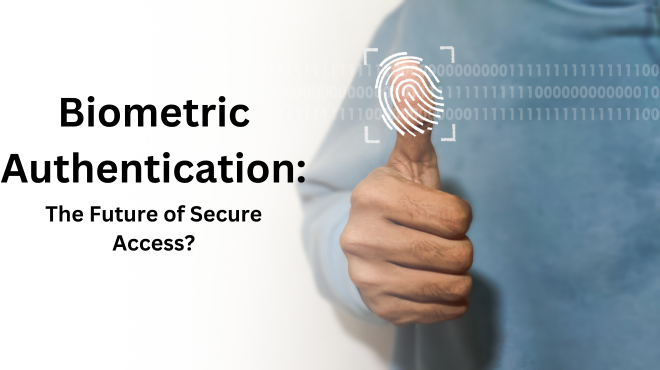Digital trends are ever-changing. New tech methods make it easier to stay safe and private online. A big change on the horizon? Biometrics in web design! This can totally change how we prove who we are online. This article looks at biometric security, why it’s on the rise, the problems it faces, how we can solve them, and what it means for website design in the future.
Unpacking Biometric Security
Biometric security is a unique safety method. It uses special physical or habit traits to prove who a user is. Think fingerprint scans, facial recognition, voice checks, even eye scans! These features get recorded, turned into code, compared to saved templates to confirm the user. This tech is far advanced. It brings top-notch security and ease to proving who you are online. Users forget their passwords or lose extra security tools less. The trust on the user's special physical or habit-based characteristics makes this safety option even more secure, as these traits are super hard to copy or fake. So, using biometrics lifts online security to a new stage. It's a strong and practical answer to growing online threats.
The Rise of Biometric Authentication
Biometric authentication is getting more popular. Why? It’s a trusty guard in a time of growing cyber threats. Biometric data, linked to a person and nearly uncopyable, is a solid way to check identities. Plus, tech advancements and fallen costs have driven this trend forward. Fingerprint readers and facial recognition tech are now common finds on smartphones and laptops.
Biometrics is plausible and often-used because of this. What’s more, it’s straightforward, user-friendly. People no longer struggle with remembering many complex passwords. Instead, a quick face scan or finger swipe gives secure access to accounts. This mix of better security, lower cost, more access, and user-friendliness increased the love for biometric authentication.
Must Read: Top Web Development Trends in 2024
Biometrics in Web Development: Obstacles along the Path
Biometric authentication in web development isn't without problems though. Data privacy tops the list. Biometric data is highly personal and sensitive. It needs protecting, storing safely and handling with care. This requires heavy-duty encryption and stiff data protection rules. And that's costly. High tech needed to gather, process, and secure biometric data can burn a hole in the pocket, a hurdle for smaller businesses or those just starting.
Also, not everyone can access biometric tech. So, using biometric authentication might shut out some potential users. These hurdles need thinking over when adding biometrics to web development.
Answering the Tough Questions
Integrating biometric verification for websites sure comes with hurdles. But, we've got tricks to tackle them.
Worried about privacy with biometric data? A mix of solid encryption tactics and data hiding methods becomes the answer. These steps ensure that even if data gets stolen, it can't be led back to you, hence keeping privacy intact.
Thinking about the steep price of biometric tech? A realistic fix is in the cloud-based biometric authentication services. These services cut cost corners, letting firms tap into biometric tech without ditching a lot on gadgets. This also means that small firms and newbies get a chance into biometric verification, leveling the competition.
Accessibility – it's a significant barrier to tackle. Not every potential user has biometric ready gadgets. The solution? Provide alternatives to biometrics. This could be the age-old password-based methods or two-step verification options. This way, everyone gets access to the platform securely, regardless of their gadget's biometric capabilities.
So, biometrics and web development can indeed mesh well! Yes, there are obstacles, but they're not impossible to overcome. With smart planning and fresh tools—like cloud service or different ways to confirm who you are—we can tackle these hurdles head-on.
Good To Read : Top Web App Development Ideas in 2024
What Might Biometrics Mean for Web Development's Future?
Biometrics is growing fast, and it's starting to shake things up in the web world. It's not just about stronger safety—it also means smoother, more custom-made web surfing experiences. Since biometrics is now easier to come by, we can guess that more and more industries, like banks or online shopping, will start using it.
New ideas keep popping up to make this field even more exciting, like behavioral biometrics. It studies unique habits like typing rhythm, mouse movement, or how a gadget is held, to strengthen the security. This way, it's even tougher to break into someone's account.
But it's not all about safety. Biometrics' influence on web development goes even further. By giving the chance for incredibly tailored experiences, businesses can greatly boost customer interaction. Picture this: you click on a website, and it knows you right away. It then rearranges the page, based on your past clicks and likes. It's like a seamlessly engaging, personal assistant, just for you.
Peeking into the future, it's obvious that adding biometrics to web design opens up many fantastic opportunities. Yes, there are hurdles to overcome, but they're not impossible to defeat. If we use the right plans and tools, we can look forward to biometrics being a typical part of online identity checks. This means a future without lost passwords.
Biometrics in webpage creation has sped from being an idea to a widely-supported fact, showing us how fast technology is developing and how much it's impacting online safety. As we get ready for this thrilling new time, it's evident that biometrics will be key in shaping web development's future.
Experience the Future of Security! Revolutionize Authentication with Biometrics in Custom Web Application Development Services! Elevate User Experience, Enhance Security.
Concluding
Moving toward the end of our talk about adding biometrics to web design, it's clear that this blend promises to greatly change the online world. While using biometrics does introduce difficulties, such as data privacy, expense, and availability, possible fixes include strong encryption methods, services based in the cloud, and varied ways of checking identities. This fresh identity confirmation method strengthens online safety, simplifies user encounters, increasing interaction and user happiness.
Behavioral biometrics, an exciting development in this field, also boosts security and tailors the user experience, suggesting a future filled with highly personalized online interactions. Despite the obstacles, adding biometrics into web design is an exhilarating opportunity, allowing businesses of all sizes to be innovative, secure their networks, and improve user experiences.
Indeed, the journey to common biometric verification has challenges. However, with proper plans and resources, we can tackle these. As we progress, we can expect a time when we no longer need to remember passwords as touching or looking can verify us. The future of creating websites is closely linked with biometrics. This new tech will surely change how we protect our online identities. This move from idea to reality shows the quick progress of technology and its effects on digital protection. Excitedly, we wait for this fresh period, where biometrics will be a big part in making websites.



No comments yet